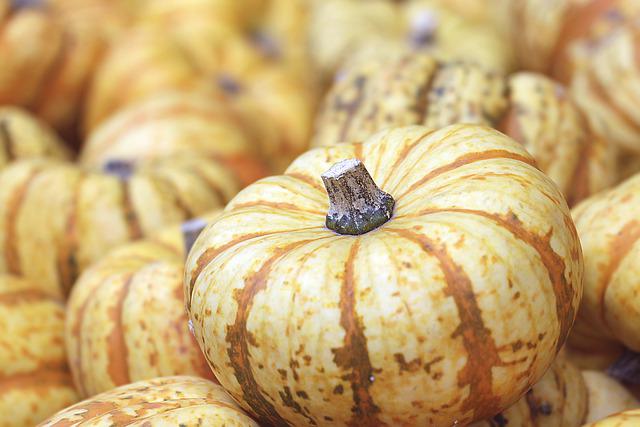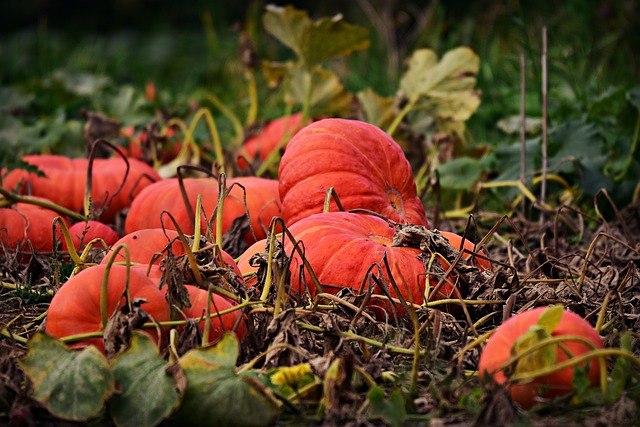Are Pumpkins a Berry?

The short answer is yes. Pumpkin fits the criteria of what a berry is. Berry defines it as a “simple, fleshy fruit that usually has many seeds.” So does it mean that pumpkin is a fruit? Absolutely! Berries are a subcategory of fruit that is more general than “berry.” A pumpkin cannot be classified as a vegetable since the edible parts of a plant are the leaves, stems, and roots.
Table of Contents
What Makes Pumpkin a Berry?
According to britannica.com, a berry is a fruit with more than one seed. This means many plants called berries, like raspberries, blackberries, and strawberries, are not berries.
There are two main types of berries called hesperidium and pepos. Hesperidium is berries that are divided into different parts. Fruits like oranges and lemons are typical examples of this type of berry. Pumpkins and many other fruits in the cucurbit family, like cantaloupes and watermelons, belong to the second type of berry, Pepos, which doesn’t have segments inside the fruit.
What Makes Pumpkin a Fruit?
Fruit is a matured ovary containing the plant’s reproductive structure, typically the seed. The element of the definition about mature fruit is required, as immature seeds prevent the plant’s reproduction. In addition, mature fruit attracts animals capable of dispersing seeds, such as birds and bats.
You will observe the seeds when you cut open any fruit, including a pumpkin. Cucumbers, peppers, olives, tomatoes, and avocados also belong to this category if you wish to have your mind blown further.
Why is Pumpkin Not a Vegetable?
Vegetables typically have a savory flavor and are defined as edible plant parts lacking seeds. They usually have roots, stems, flowers, bulbs, or leaves, so leafy greens, yams, cabbage, cauliflower, potatoes, and asparagus are all vegetables. Pumpkin is not a vegetable, as it has at least one seed.
While you’re systematically wiping your fruit of seeds as soon as possible, pumpkin is full of them, and some are poisonous if ingested by an animal or human.
What Exactly is a Pumpkin?
The situation is further complicated because, botanically speaking, the term “pumpkin” does not mean anything, as pumpkins are simply squash. There are two types of squash: tender or summer squash and hard-skinned or winter squash. Summer squash consists of zucchini, pattypan, and summer squash itself. Winter squash has tough, thick skins that enable them to survive the long winter. Consider butternut, acorn, Hubbard, spaghetti, buttercup, and pumpkins.
Pumpkins are a type of winter squash belonging to Curburbita Pepo. But “pumpkin” is also used to describe other plants resembling pumpkins.
Origin of Pumpkins
Pumpkins were first grown as crops around 7000 BC in the southern parts of the United States and Mexico. According to the Oxford English Dictionary, the word pumpkin comes from the Greek word pepon, which means “large melon,” according to the Oxford English Dictionary.
With the discovery of the New World, pumpkins quickly spread to different parts of the world. It started in Tudor, England, in the 1600s and then spread to the rest of Europe. Because so many people used it, many cultivars were made, and now there are nearly 100 different kinds.
Pumpkins come in various colors, including orange, white, yellow, green, and even blue or gray. While some varieties of pumpkins may have a purple coloration due to anthocyanin pigments, fully purple pumpkins are relatively uncommon and may result from genetic mutations or hybridization. One example of a purple pumpkin variety is the Jarrahdale pumpkin, a cross between the Blue Hubbard and Cinderella varieties and has blue-green skin with light pink-orange flesh.

Are Pumpkin Annual Plants?
Pumpkins are annual plants that die if they get too cold. They grow on a strong vine with tendrils that can be grown on the ground or trained to grow up a trellis. For pumpkins to grow well, the weather needs to be warm. On average, pumpkins make fruit that weighs between 3 and 4 kg (6 to 8 lbs).
But depending on the type, the fruit can be anywhere from 1 lb to 500 lb. But most plants usually have a total yield of between 6 and 66 lbs (3 and 30 kg). Click here to learn more about the best varieties to grow.
Pumpkins usually keep well, so an average home gardener could grow enough pumpkins to last a year. I grow about 200 pounds of pumpkins yearly, enough for my family of five to eat for the whole year.
